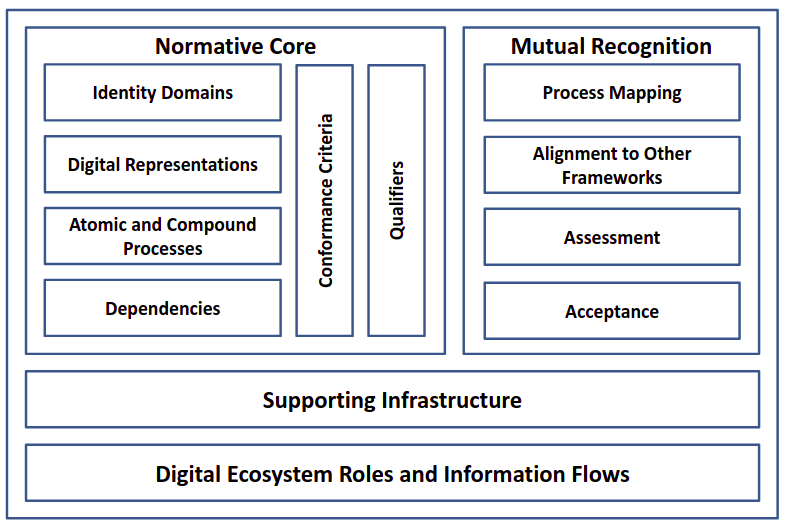Public Sector Profile of the Pan-Canadian Trust Framework | Cadre de Confiance pancanadien
Overview
The latest update PCTF Version 1.5 Consultation Draft for public review is now available

The PCTF is a model that consists of a set of agreed-on concepts, definitions, processes, conformance criteria, and an assessment approach. It is not a “standard” as such, but is, instead, a framework that relates and applies existing standards, policies, guidelines, and practices, and where such standards and policies do not exist, specifies additional criteria. The role of the PCTF is to complement existing standards and policies such as those concerned with security, privacy, and service delivery.
The PCTF facilitates a common approach between the public sector and the private sector. Use of the PCTF ensures alignment, interoperability, and confidence of digital identity solutions that are intended to work across organizational, sectoral, and jurisdictional boundaries. In addition, the PCTF supplements existing legislation, regulations, and policies.
The PCTF supports the acceptance and mutual recognition of:
- Digital identities of entities such as persons and organizations; and
- Digital relationships between entities.
The PCTF defines a set of discrete process patterns (called atomic processes) that can be mapped to business processes. This mapping makes possible a structured assessment and evaluation of a digital identity solution and identifies any dependencies on external organizations and providers.
The PCTF is technology-agnostic and is defined in a way that encourages innovation and participation in the digital ecosystem. It allows for the interoperability of different platforms, services, architectures, and technologies. Furthermore, the PCTF is designed to take into consideration international digital identity frameworks, such as:
- The Electronic Identification, Authentication, and Trust Services (eIDAS);
- The Financial Action Task Force (FATF); and
- The United Nations Commission on International Trade Law (UNCITRAL).
Finally, it should be noted that the Public Sector Profile of the PCTF, in itself, is not a governance framework. Instead, it is a tool to help assess a digital identity program or service. As such, the PCTF may be applied in many contexts.
